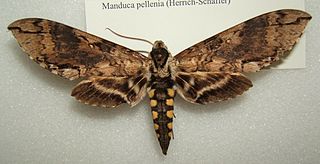
Manduca pellenia is a moth of the family Sphingidae. It is known from Mexico, Belize, Guatemala, Nicaragua, Costa Rica, Panama, Colombia and Ecuador.

Eumorpha phorbas is a moth of the family Sphingidae.

Eumorpha triangulum is a moth of the family Sphingidae.

Eumorpha vitis, known as the vine sphinx, is a moth of the family Sphingidae.

Xylophanes germen is a moth of the family Sphingidae. It is known from Mexico, Costa Rica, Guatemala and is found from Venezuela to Bolivia.
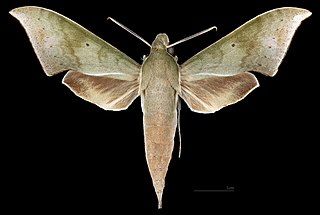
Xylophanes hannemanni is a moth of the family Sphingidae. It is known from Mexico, Guatemala, Nicaragua, Costa Rica and Panama and further south through Ecuador to Peru and Bolivia.

Eupyrrhoglossum sagra, the Cuban sphinx, is a moth of the family Sphingidae. The species was first described by Felipe Poey in 1832. It is known from tropical and subtropical lowlands in Cuba and from Mexico and Belize to Guatemala, Costa Rica, Bolivia, Paraguay, Argentina and Uruguay. Occasionally, strays are found in Florida.

Madoryx bubastus is a moth of the family Sphingidae. It is found in Central America and South America, including French Guiana and Venezuela south to at least Bolivia and Argentina. It is also present in Mexico.
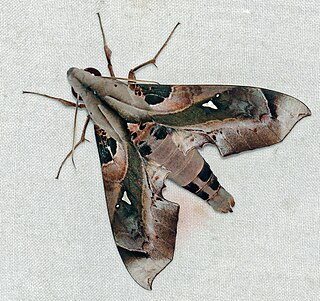
Madoryx plutonius is a moth of the family Sphingidae.

Nyceryx tacita is a moth of the family Sphingidae first described by Herbert Druce in 1888. It is found from Mexico, Guatemala, Costa Rica and Panama to Bolivia.
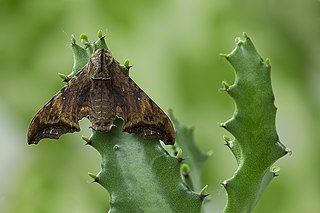
Nyceryx riscus is a moth of the family Sphingidae.

Nyceryx coffaeae is a moth of the family Sphingidae. It is found from Mexico, Belize, Guatemala and Costa Rica into South America, where it is known from Brazil, Colombia, Ecuador and Bolivia.

Nyceryx ericea is a moth of the family Sphingidae first described by Herbert Druce in 1888. It is found from Panama, Guatemala and Costa Rica to Brazil and Bolivia.
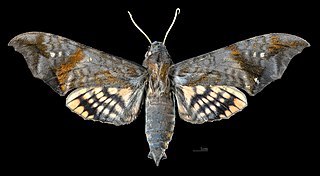
Nyceryx hyposticta is a moth of the family Sphingidae. It is known from Colombia, Venezuela, Ecuador, Peru and Bolivia.

Nyceryx magna is a moth of the family Sphingidae.

Nyceryx alophus is a moth of the family Sphingidae. It is found from Brazil to Bolivia, Argentina, Paraguay and Uruguay.
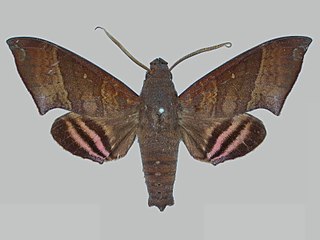
Pachygonidia drucei is a moth of the family Sphingidae. It is found from Panama and Costa Rica north to Guatemala, Belize and Mexico.

Pachygonidia subhamata is a moth of the family Sphingidae.
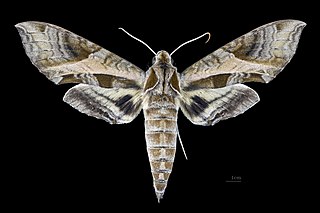
Eumorpha megaeacus is a moth of the family Sphingidae.
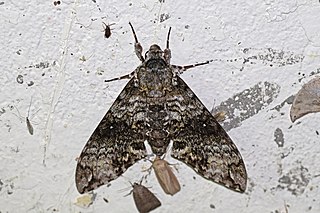
Manduca schausi is a moth of the family Sphingidae. It is found from Mexico, Guatemala, Nicaragua and Costa Rica to Brazil, Argentina and Bolivia.





















